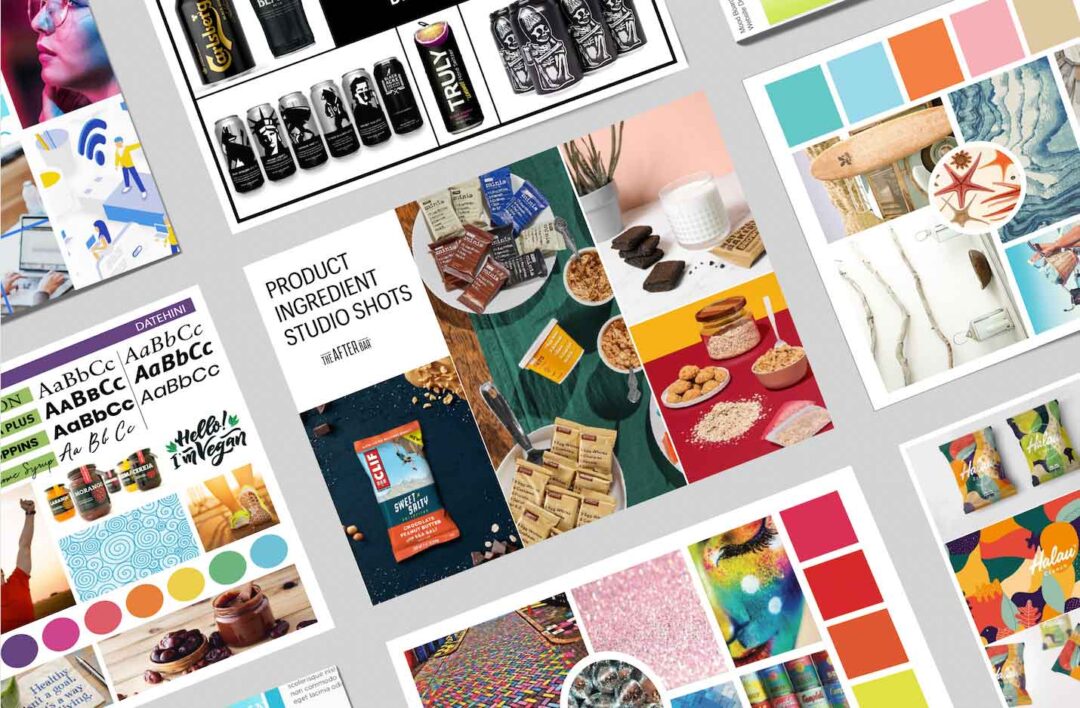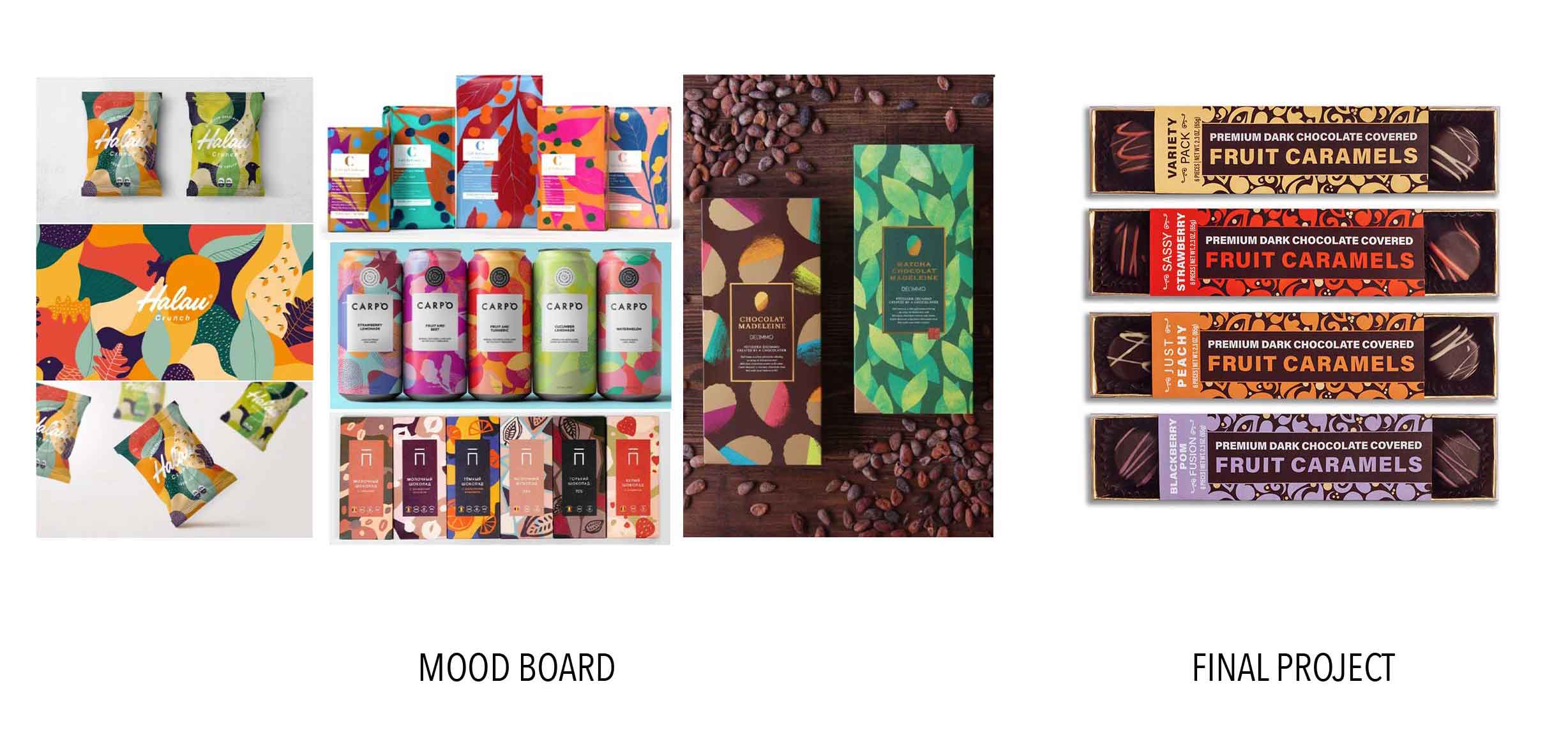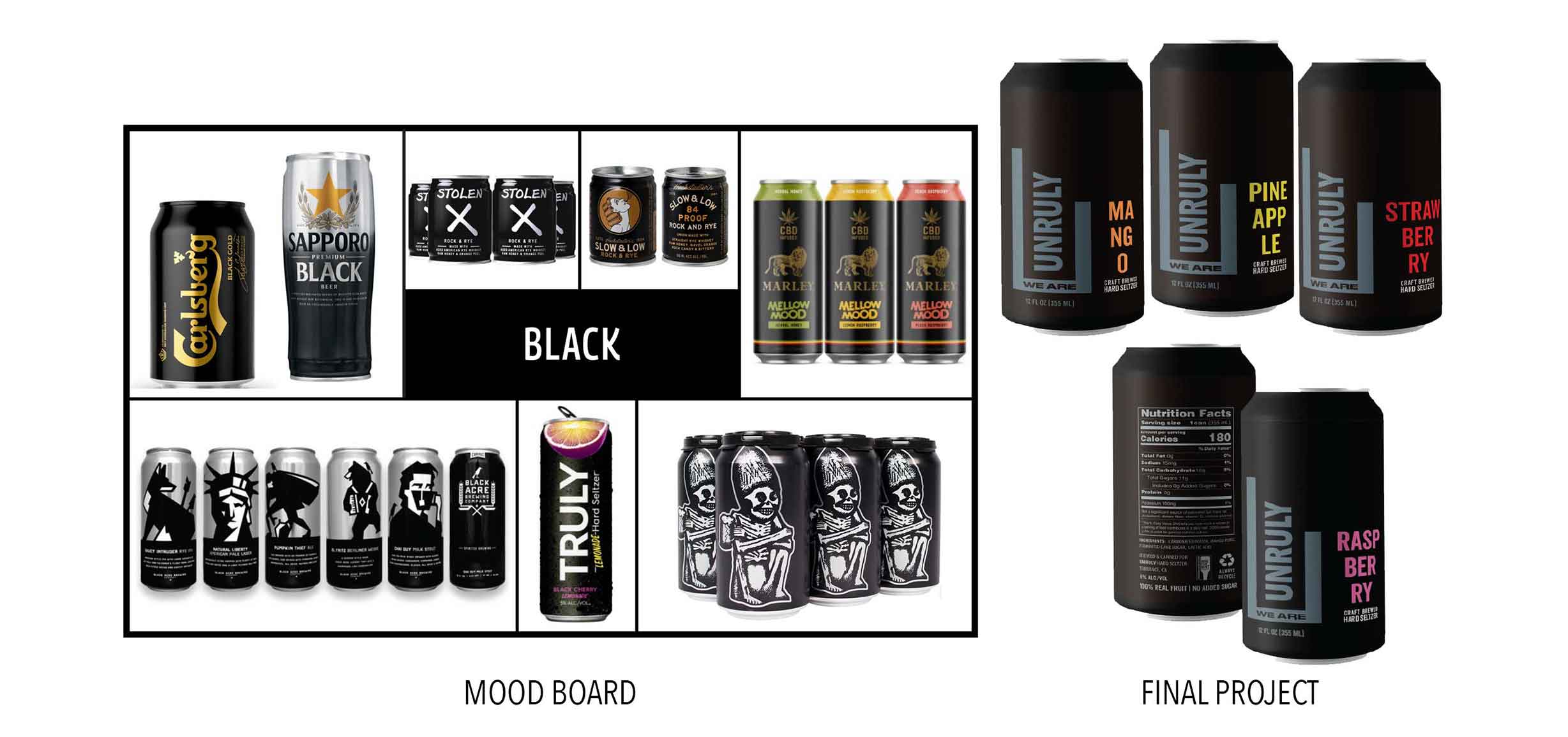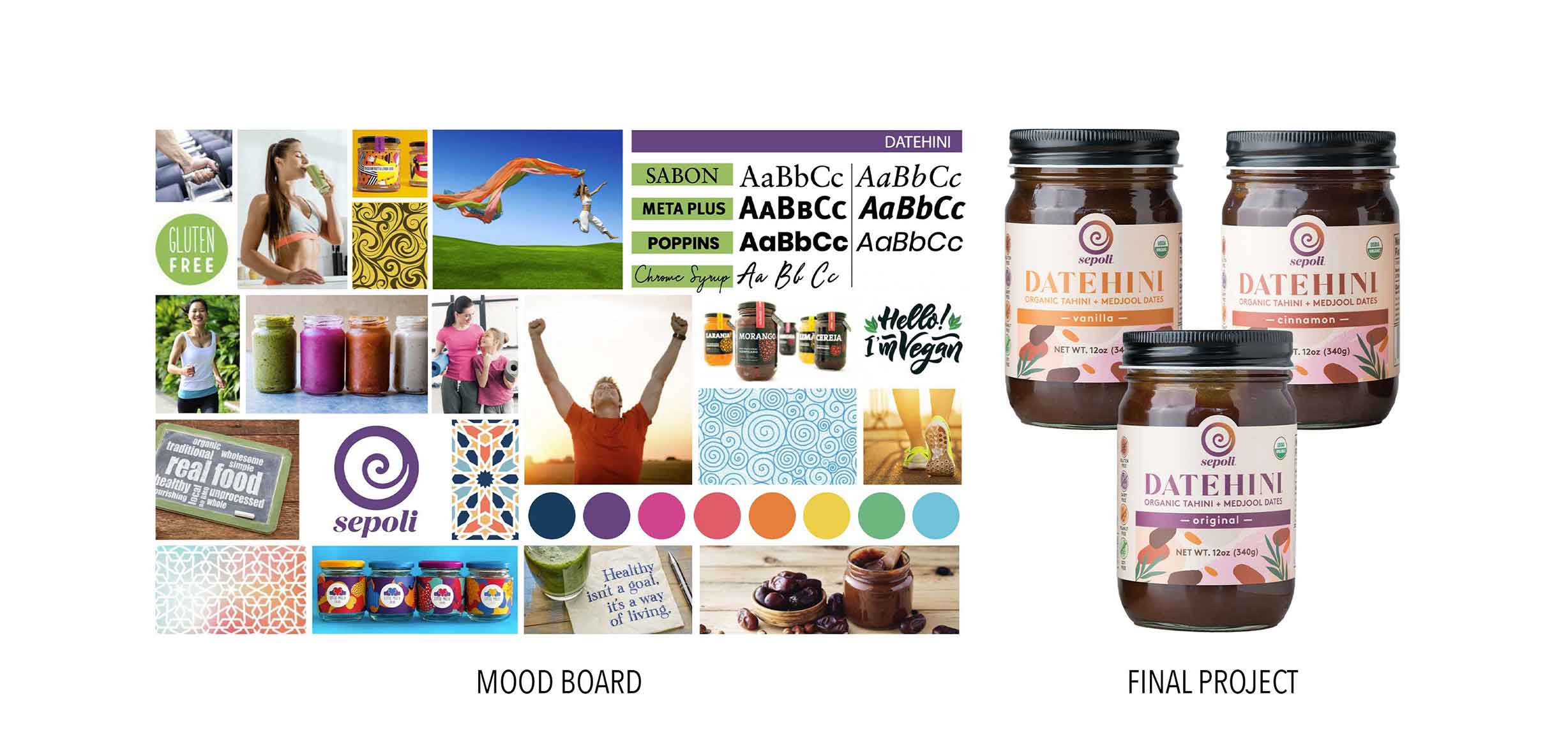
Organize visual branding ideas with Mood Boards!
Today’s topic focuses on Mood Boards and how they are used to collect and organize ideas, images, and other design elements related to a particular project.
Mood boards are a useful tool for designers to share their vision with clients and team members. Seeing certain graphic elements together can help generate new and innovative ideas for the final project.

They typically consist of a collage of images, colors, and fonts, oftentimes from existing brands, that convey a certain mood or style. We usually present more than one mood board, each with a different design aesthetic. Once the final mood board is approved, we have a clear direction for our first round of actual designs.

How are mood boards helpful for package design?
- Establishing a vision: A mood board can help the designer establish a vision and direction for a packaging project. By compiling images, fonts, substrates, and colors that evoke the desired mood or aesthetic, you can create a reference point to guide your design decisions.
- Clarifying ideas: Communicating your package design vision to others is often a difficult task. By presenting a visual representation of your concept, even if you are using existing brands as samples, you can help stakeholders better understand your vision and provide more targeted feedback.
- Consistency and coherence: Mood boards help ensure consistency and coherence in package design projects. They provide a visual reference point for designers and stakeholders throughout the project, ensuring that the overall design stays true to the original vision.

Up next – BRAND, PRODUCT & FLAVOR NAMING – creative ways to come up with the perfect name! Stay tuned!